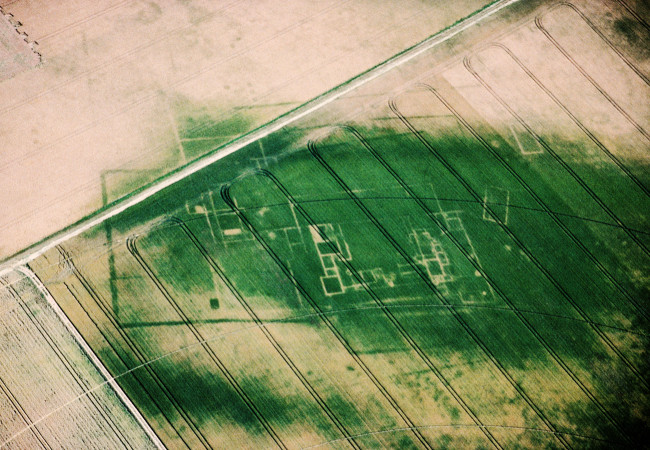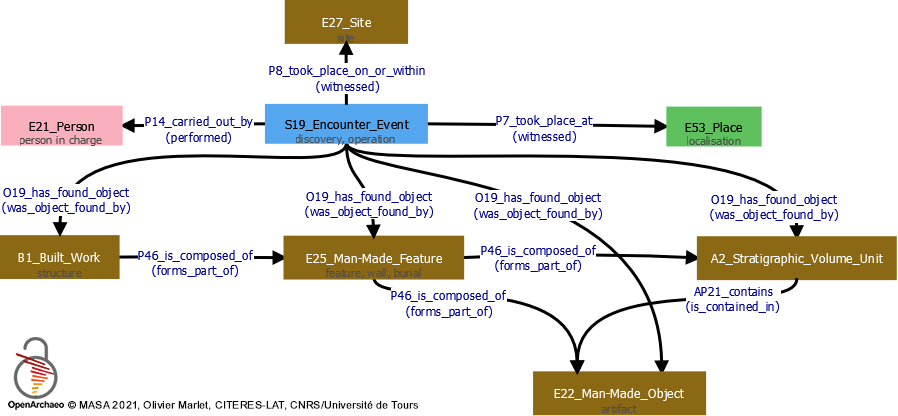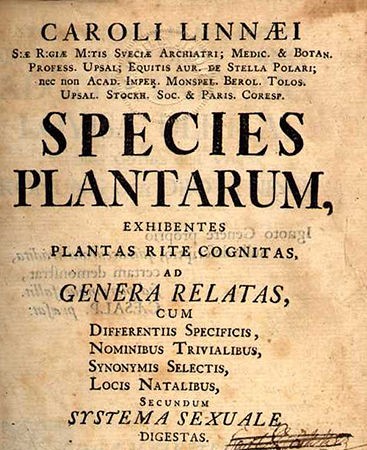Openlink Virtuoso est le triplestore utilisé dans le projet DBPedia…

The Genesis of Sparnatural in the context of the OpenArchaeo platform
The OpenArchaeo platform, developed by French consortium Huma-Num MASAplus (Mémoire des Archéologues et des Sites Archéologiques) together with SPARNA, is a platform dedicated to archaeological data interoperability. This semantic interoperability objective relies on the strong conceptual foundations offered by the CIDOC-CRM data model.
Paired with the CIDOC-CRM in a federated way, OpenArchaeo aims at :
- making available the archaeological datasets produced by the MASAplus consortium’s partners on the semantic web, in the form of a triplestore with data aligned with the ontology and its extensions dedicated to archaeology ;
- providing an intuitive query interface for archaeological data.
The latter query interface integrates the Sparnatural knowledge graph exploration component. The UI of this component was heavily inspired by the British Museum’s ResearchSpace semantic search feature, as the system proposes the user to build his own queries based on the CIDOC-CRM model underlying the data.
About ResearchSpace platform
Initiated in 2009 by a cross-disciplinary team at the British Museum, ResearchSpace is « A full CIDOC-CRM authoring and search system, based on an exhaustive collection of forms that reflects all applicable relationships from the CIDOC CRM ontology. »
Among a wide range of semantic tools to create, manipulate, analyse and visualise data, the platform provides a semantic structured search component based on categories and relations.
While open source, ResearchSpace’s code didn’t fit our architecture : we just chose to follow the simple visual elements of ResearchSpace’s query interface to develop our own Sparnatural query builder for OpenArchaeo, and set up a system of icons to identify the main components of the archaeological data.
ResearchSpace has recently (december 2024) released a brand new 4.0.0 version. This latest can be installed easily and now comes with a default setup of forms based on the CIDOC-CRM. It enables image annotations, knowledge maps creations, semantic narratives writing, timeline productions, and more semantic tools.
Sparnatural’s first use-case was OpenArchaeo’s CIDOC-CRM model !
The structure of the knowledge graph of OpenArchaeo relies on the CIDOC-CRM and some of its extension (CRMarchaeo, CRMsci and CRMba). It is a generic model that covers the basic concepts found in most archaeological corpuses (site, operation, structure, feature, wall, burial, stratigraphic unit and artifact).
Here a focus on Class S19 :

Several external thesauri were added too for querying the datasets : PACTOLS thesaurus for archaelogy, but also Geonames and Periodo for spatial and temporal searches.
This way, when users wish to connect two elements (artifact and site for example), the interface automatically suggests the available relationships between these entities, enabling users to formulate their request in a simple way without having to know either the entities and properties of CIDOC CRM, or the structure of the system : the SPARQL queries that correspond to the sentences visually built by users will be automatically computed. In addition, the usage of thesauri allows the users to cross-reference easily multiple datasets through the different widgets proposed in Sparnatural.
Get the latest release of Sparnatural !
Since it was created for OpenArchaeo in 2019, Sparnatural UI has been fully redesigned. It now offers a large panel of features, from different widgets for value selection (dropdown lists, ordered by occurrence count or alphabetically, autocomplete search fields, date pickers, tree widgets…) to brand new result display plugins : the default visualisation is a table of results, but if the results are geolocalized they can be shown in a map. Also grid, stats, pie or bar charts, and a timeline plugin have been made available and documented.
To go further on OpenArchaeo’s platform …
See a presentation of the project on the CIDOC Museum Documentation Channel
(« Semantic modelling of archaeological data online workshop series »)
The platform : http://openarchaeo.huma-num.fr/
The project : https://masa.hypotheses.org/openarchaeo
Read full research paper about the project : https://ceur-ws.org/Vol-2375/paper1.pdf
Image : Vestiges of a large villa in Courbehaye « les Deux Muids / le Moulin de Mongé », photo Alain Lelong (2003), Atlas des Établissements Ruraux de Beauce Antique, licence CC BY-NC-SA



